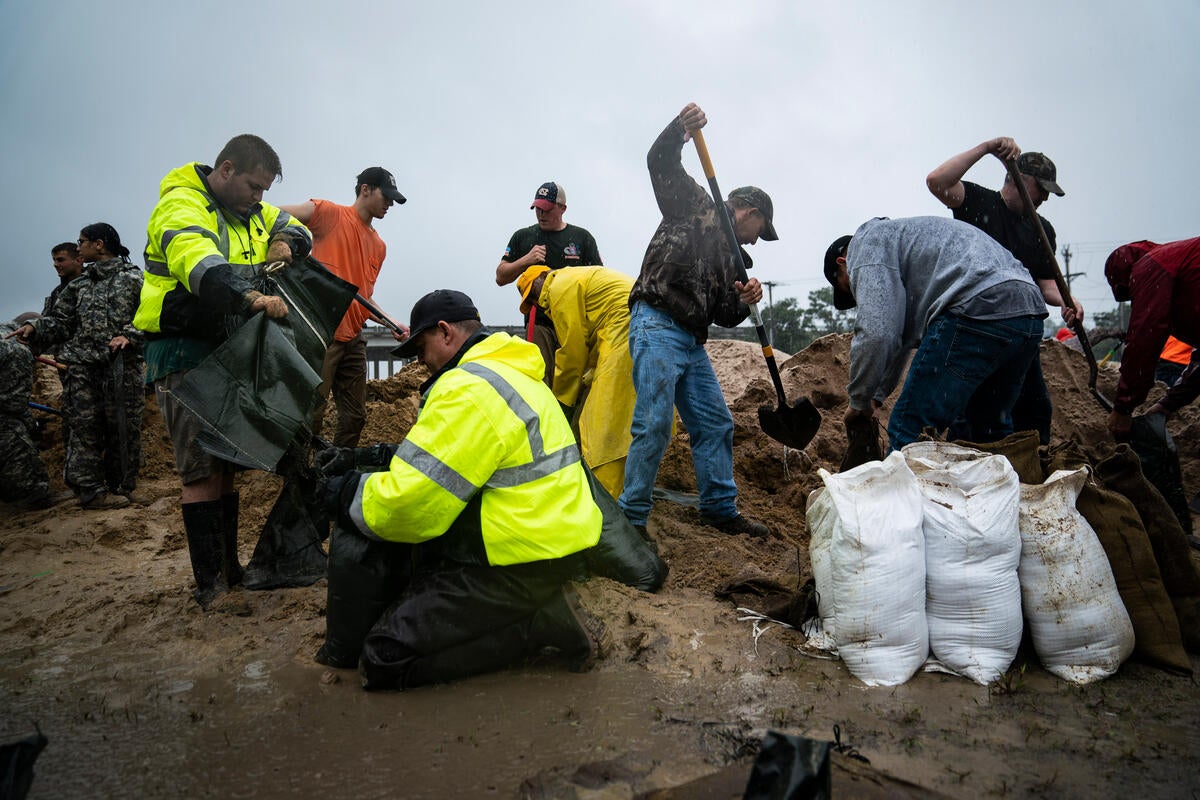In 2018, Hurricane Florence made landfall near Wilmington, North Carolina, taking 42 lives and costing more than $16 billion in estimated damage. Now, five years later, many residents and communities are still reeling from the storm’s floodwaters. Blue tarps remain on unpatched roofs, businesses have not returned and communities have experienced disproportionate recoveries.
The immediate and residual impacts from Hurricanes Florence and Matthew, Tropical Storm Fred and other subsequent unnamed flooding events have had long-lasting impacts on communities. As a result, these events have encouraged state leaders to take action to better prepare for future storms.
Environmental Defense Fund thanks leaders, as well as businesses, conservation groups and community members, for working to build a more flood-resilient North Carolina. Let’s look at how far we’ve come in the last five years.

LUMBERTON, NC – SEPTEMBER 14 : 40 members of the National Guard and 100 volunteers fill sand bags and build a wall across train tracks where flood waters flowed into Lumberton in hurricanes past behind West Lumberton Baptist Church on Friday, Sept 14, 2018 in Lumberton, NC. North Carolina State Senator Danny Earl Britt, Jr. organized the action through facebook in defiance of CSX Transportation but with permission of the Governor to try and prevent major flooding in the area. (Photo by Jabin Botsford/The Washington Post via Getty Images)










